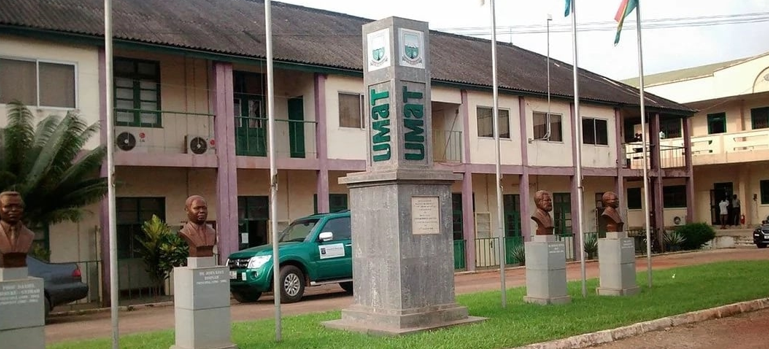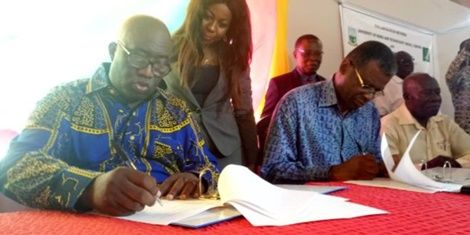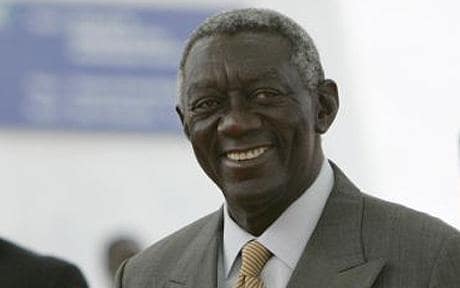UMaT develops technology to clean polluted water bodies
- Posted on
- Comment

Professor Richard Kwasi Amankwah, the Vice Chancellor of the University of Mines and Technology (UMaT), says the University has developed a technology capable of cleansing the polluted rivers in the country.
He said the University had already tried the technology in a small river at Tarkwa and had worked perfectly and would need an entry permit from the Water Resources Commission to enter the polluted rivers with a boat in order to apply the technology on a larger space.
Prof. Amankwah announced this when Mr Samuel Abu Jinapor, the Minister of Lands and Natural Resources, led a delegation to visit UMaT in Tarkwa on Tuesday, as part of his two-day working tour of the Western Region.
The Minister inspected infrastructural projects funded under the Minerals Development Fund on the campus of UMaT.
Explaining how the technology works to the media, Prof. Amankwah said since the colloidal particles in the water bodies could not settle at the bottom of the river on their own, it would introduce some environmentally-friendly irons to neutralise their charges to force them to settle.
Mine experts have estimated that government required US$250 million to clean the polluted rivers in the Western Region alone.
The turbidity levels of major rivers in Ghana including River Prah, Ankobra, Tano and Bia have been worsened due to the activities of illegal small-scale mining, otherwise known as ‘galamsey’.
Turbidity is the cloudiness of a fluid caused by large particles that are generally invisible to the naked eyes. It’s similar to the smoke in the atmosphere.
Prof. Amankwah proposed four interventions the University could perform to help the government win the battle against the illegal small-scale menace.
He mentioned the use of technology to clean the water bodies, introduction of national sustainable small-scale mining awareness day on 2nd of June every year, ‘Catch them Young’, where teaching of mining model programmes from class four would conscientise Ghanaian children to respect the environment and observe mining regulations when they grow up.
It would set up an annual Small-Scale Mining School to educate miners on issues pertaining to mining laws and regulations.
Prof Amankwah also pledged the University’s readiness to collaborate with the Ministry of Lands and Natural Resources to plant five million trees on June 11 under the Green Ghana Project.
The Vice Chancellor thanked government for funding various infrastructural projects at the University under the Minerals Development Fund and appealed to the Minister to honour the pledge of allocating five million Ghana cedis annually towards its infrastructural upgrading.
Mr Samuel Abu Jinapor, the Sector Minister, assured of government’s commitment to collaborate with UMaT to get rid of illegal small-scale mining in the country.
He said the University was a fertile ground for generating innovative ideas towards the meaningful utilisation of the natural resources and would collaborate with it to achieve a worthy cause for the nation.
The Minister reiterated government’s resolve to clamp down on galamsey, noting that the law enforcement authorities had been tasked to enforce the law on mining, irrespective of one’s political affiliation or social status.
Mr Jinapor said mining in forest reserves and water bodies was unlawful and had been marked as “red zones”, therefore anyone caught mining 100 metres to a river or in forest reserves would be arrested and prosecuted in accordance with the law.









 (Selorm) |
(Selorm) |  (Nana Kwesi)
(Nana Kwesi)